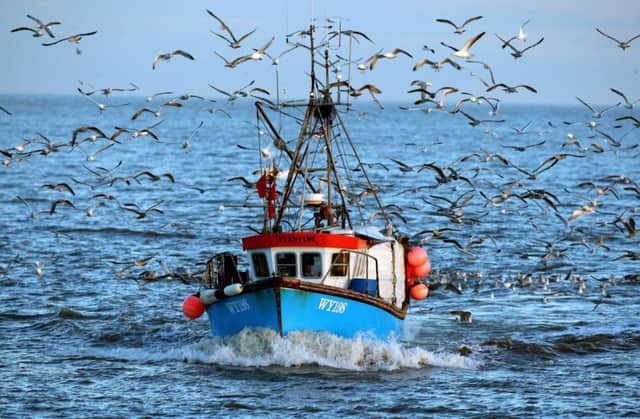Investing in a sustainable future


Scottish fishermen are spearheading a wide range of conservation and management initiatives to secure a sustainable future for our fisheries. Perhaps one of the most innovative has been the huge amount of work that our industry has invested in developing new prawn (langoustine) trawls that significantly reduce discards of whitefish such as cod. Prawn vessels are allocated a whitefish quota, too, but these new nets help ensure they don’t land excess fish above their allocation, which otherwise would be thrown overboard under European legislation.
Working in partnership with the Scottish Government, the new trawl has achieved reductions of more than 50 per cent of cod caught when compared to a standard trawl. Trials have shown that the new trawls can achieve significant reductions in unwanted bycatches of haddock and whiting. The fish which remain in the net are covered by the boat’s fish quota for the mixed fishery, thus keeping discards to a minimum. Alternative options for prawn vessels include the use of very large escape panels in their nets with a mesh size of 200mm, which ensure the release of juvenile fish.
Advertisement
Hide AdAdvertisement
Hide AdOur fishermen have also adopted seasonal fishing closures to protect fish spawning areas and aggregations of juvenile fish. In 2013, 166 areas amounting to around 33,600 square miles of sea were closed to fishing on a temporary basis. Working in tandem with scientists from Marine Scotland, our fishermen accumulate catch data that can identify vulnerable areas so as to bring around a swift closure.
Indeed, working with marine scientists is a key component of the everyday work of Scottish fishermen. These partnerships involve the monitoring of our fish stocks for condition, size and distribution and overall observation of the marine habitat and wider ecosystem. Such data helps inform future fisheries management and conservation strategies.
Marine Scotland has recognised that this onboard observer scheme can contribute a significant amount of data that can be incorporated into the stock assessment process for the main whitefish species.
The Scottish fishing industry has also liaised closely with government, NGOs and other stakeholders in the creation of a network of marine protected areas (MPAs) for the conservation of biodiversity and geodiversity features around our coasts. It is vital that the resulting network of MPAs is constructed and managed in the most effective way possible, striking a balance between conservation and sustainable harvesting to meet the objectives of both. In demonstration of this, our fishermen have agreed with Marine Scotland that voluntary measures restricting activity in 11 sites will be put in place immediately.
An exciting recent development has been the launch of Fisheries Innovation Scotland (FiS). A partnership of the catching, processing and retail sectors, along with the Scottish Government and scientists, FiS will lead a programme of research, knowledge exchange and innovation to help shape future governance and management of sustainable fisheries in Scotland. The Scottish catching sector is investing a large sum to support the project. These funds, together with other funding, will be used to support a series of applied research projects designed to place Scottish fisheries at the forefront of innovative fisheries management.
This in turn will help support the work of the Scottish Fishermen’s Trust, which was established by the SFF in 2000 to fund and actively support a large number of initiatives, including the advancement of education in relation to our marine environment.
Such commitment by our fishermen in looking at the bigger picture is illustrated by the growing number of fisheries that have been certified by the Marine Stewardship Council (MSC) for their responsible management, including flagship staples such as North Sea haddock and herring.
The Food Standards Agency recommends we eat two portions of fish a week, one of which should be oily such as mackerel or herring. The supply chain from boat to plate is short and Scottish-caught fish is healthy to eat and tastes superb. Our home-caught fish and shellfish should be on all our plates on a regular basis.
• Bertie Armstrong is chief executive of the Scottish Fishermen’s Federation
SEE ALSO